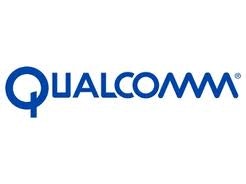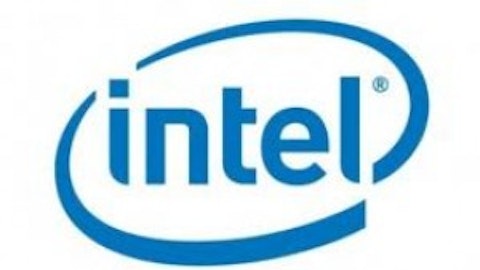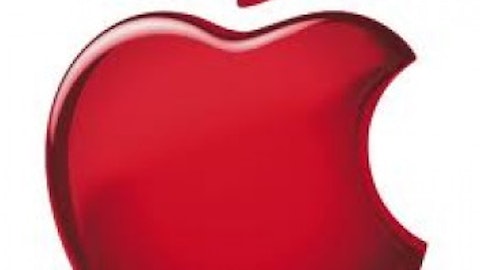
Wandering eyes
Qualcomm has been the exclusive supplier of baseband modems for Apple for the past two generations. Apple originally sourced basebands from Infineon for the first three generations, and started transitioning to Qualcomm with the CDMA version of the iPhone 4 for Verizon Communications Inc. (NYSE:VZ) Wireless. Since then, the iPhone 4S and iPhone 5 have been all Qualcomm all the time, but Apple has certainly changed suppliers in the past.
Currently, Qualcomm has a lock on the LTE baseband market and the company doesn’t have any meaningful competition yet. Broadcom is now stepping up to the plate by announcing its first foray into LTE baseband chipsets. This move was mostly expected, as late last year Broadcom wireless exec Bob Rango outlined the company’s LTE ambitions and CEO Scott McGregor told investors to keep an eye out for “signposts” in 2013.
I saw the signpost and it opened up my eyes
Broadcom Corporation (NASDAQ:BRCM)’s silicon in question is the new BCM21892, which supports a who’s who of cellular standards, including both FDD and TDD LTE, along with 3G HSPA+ and TD-SCDMA. The BCM21892 hopes to give Qualcomm’s MDM9615 a run for its money, which is the current LTE chipset of choice in a wide array of high-end smartphones (including the iPhone 5).
Broadcom’s chip is similarly built on a 28-nanometer manufacturing process at Taiwan Semiconductor Mfg. Co. Ltd. (ADR) (NYSE:TSM), much like Qualcomm’s. That’s not too surprising, since TSMC enjoys a nearly 100% market share for 28-nanometer production and has overcome its supply constraints of yesteryear. That particular manufacturing node is expected to generate $6.2 billion in revenue this year.
However, Broadcom claims that its overall footprint is 35% smaller than its “current industry solutions,” i.e., Qualcomm. Another point of differentiation is that Broadcom features heavy RF radio integration — an advantage over Qualcomm — and will be backwards compatible with many older networks.
One legacy network format that won’t be supported is CDMA2000 1x/EVDO, which to a certain extent affects its prospects on Verizon and Sprint Nextel Corporation (NYSE:S). For Verizon, this is less of an issue since Big Red intends to complete its 4G LTE rollout later this year and launch Voice-over-LTE next year, which is when BCM21892 devices are expected to hit the market. Sprint is a different story, though.
BCM21892 will also support LTE Advanced with carrier aggregation, which allows a device to utilize several frequency bands in order to boost bandwidth. This is particularly important as finite spectrum continues to get more crowded, and the only other way to achieve the same levels of speed would be if a wireless carrier had a solid 20 MHz chunk of spectrum, and most simply don’t. Most carriers use frequency bands of 5 MHz to 10 MHz.
Supporting TDD LTE and TD-SCDMA will give the new baseband some possible inroads in China, specifically on China Mobile Ltd. (ADR) (NYSE:CHL).
Just what Apple ordered
The BCM21892 is now sampling with numerous OEMs and production is expected to ramp up in 2014. That means Qualcomm’s seat in the iPhone should be safe for at least another year.





